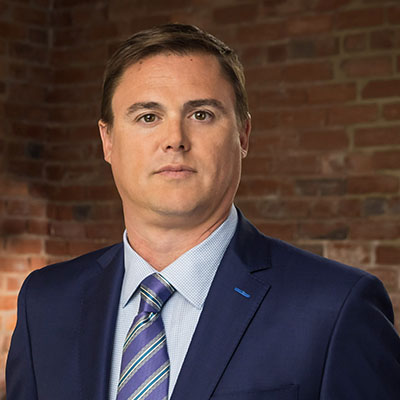At the outset of each lawsuit, I tell all my clients that, in the broadest sense, every Virginia personal injury claim consists of three components: liability, damages and insurance coverage. These are the ingredients necessary for success in the personal injury process. As my initial meeting unfolds, I go into more detail about the individual considerations that are contained within each of these three broad categories. If the facts and circumstances are deficient in any one of the three, there may be a major obstacle in the path to obtaining full and fair financial recovery. This article follows The Personal Injury Recipe: Liability (Part 1 of 3) as the second in a series of three on this topic.
—————————
The second ingredient necessary for success in a Virginia personal injury claim is damages. Virtually every individual who seeks consultation from a personal injury attorney comes through the door looking for an answer to the question: “what is my case worth?” Some people have already received a settlement offer and are trying to determine if it is reasonable. Others have been told by friends or family that there is a formula for valuing personal injury cases (i.e. three times the medical bills) and are looking to confirm that the value they have in mind is appropriate. In reality, there is no formula for calculating the value of a personal injury case. The question of full and fair compensation is unique to the facts, the circumstances of each individual and the nature and extent of the injury. One thing is for certain, however. Without damages any personal injury claim falls short.
Accordingly, in this, the second part of my three part series, I will discuss the elements of damages that need to be identified, investigated and considered when valuing a personal injury case.
Damages
In the personal injury context, compensatory damages are defined as a sum of money allocated to “recompense for the injury actually received, and include compensation for insult, pain, humiliation, mental suffering, injury to the reputation, and the like.”[1] That is a complicated way of saying that under Virginia law, the goal is to put the injured person in the same position that they would have been in had they not been injured. It is hard to imagine that a sum of money, however large in amount, can make someone whole after they sustain a serious, life-altering or potentially permanent physical injury. Unfortunately, there is no mechanism to turn back the clock; thus full and fair monetary compensation is the only available remedy for a person injured through no fault of their own.
In determining the damages to which an injured person is entitled, Virginia law lists a series of elements that make up the total award.[2] They are:
1. Any bodily injuries sustained and their effect on the injured person’s health according to their degree and probable duration;
From a back sprain to a broken leg, the question of damages begins with an assessment of the nature and severity of the injuries themselves. In practical application, injuries to the brain and spine that result in long-term impairment are more valuable than soft tissue injuries that heal relatively quickly. It is also important to remember that damages for bodily injuries include injuries made more severe or more difficult to cure because of a pre-existing physical or mental condition.[3] This first element of damages speaks to the nature and extent to which the injured person’s physical condition has changed.
2. Any physical pain and mental anguish suffered in the past and that may be reasonably expected in the future;
Everyone knows that injuries cause pain. From muscle spasm to migraine headaches, injured people experience varying levels of physical and mental discomfort. Accordingly, when an insurance adjuster, judge or jury values a claim, the law requires that they add an additional sum for the pain and suffering caused by the injuries sustained. [4]
3. Any disfigurement or deformity and any associated humiliation or embarrassment;
An injured person is entitled to additional compensation for any scarring or other deformity resulting from an injury. Whether caused by the injury itself or resulting from the medically necessary treatment needed to address the injury, disfigurement or deformity warrants additional financial compensation under Virginia law. Importantly, there must be evidence that there is a deformity, but there does not need to be direct testimonial evidence of humiliation and embarrassment for a damage award under this element to be proper.[5]
4. Any inconvenience caused in the past and any that probably will be caused in the future;
In addition to the resulting pain, injuries are by nature, inconvenient. Medical appointments require time and travel. Injured people experience a variety of limitations around their home, at their jobs and in their social lives. Each of these detriments adds to the burden of the bodily injuries themselves. When inconvenience is identified and articulated with particularity, an injured person is entitled to additional financial compensation for all of the resulting detriments caused by the injury and their recovery.
5. Any medical expenses incurred in the past and any that may be reasonably expected to occur in the future;
It stands to reason that a person injured through no fault of their own should be compensated for the medical expenses incurred as a result of their injury. Importantly, a personal injury claimant in Virginia is allowed to claim the entire amount of the bill charged by the provider. It is not necessary that the medical expenses were actually paid.[6] Additionally, the presence or absence of insurance benefits of any type that may have paid a portion or even the entire amount of the bill is not to be considered.[7] While medical expenses are near the top of every injured person’s mind in the aftermath of an injury, they are appropriately listed as fifth in the order of consideration for valuing a personal injury claim under Virginia law.
6. Any lost earnings;
Similar to claiming the entire medical bill, lost earnings claims are based on gross, not net, pay.[8] Loss of earnings may be recovered even though the injured person received their regular monthly salary from their employer or from any other collateral source (i.e. a short term disability insurance policy).[9]
7. Any loss of earnings and lessening of earning capacity, or either, that may reasonably be expected in the future;
If, as a result of the injury, an individual is unable to work in the same position or for the same duration as they were before, they are entitled to claim the difference between their pre-injury and post-recovery wage for the applicable time period. If the loss of earning capacity is permanent, the full and fair value of a personal injury claim can be significant.
With the elements of damages now identified, it is important to remember that a personal injury claimant is required to prove each element of their claimed damages by a greater weight of the evidence.[10] While the law does not require absolute certainty or proof with mathematical precision, the plaintiff must also show sufficient facts and circumstances to permit a reasonable estimate of each item before they are entitled to recover. [11]
The most straightforward example of a plaintiff’s ability to prove an element of damage comes in conjunction with concerns about the future. Once a fractured bone heals and a person is discharged from medical care for that injury, most people have lingering concerns about what may happen to that injured bone over the progression of time. Without additional evidentiary support, concern alone does not form a sufficient basis to claim future medical expenses, pain, suffering or inconvenience. Unless there is some evidence that accident-related injuries or medically necessary treatment will be needed in the future, speculation about what may or may not happen over the passage of time does not justify additional financial compensation.
In addition, a personal injury claimant must prove that each element of their claimed damages was caused by the negligence of the defendant. Under Virginia law, the plaintiff is only entitled to recover damages which are the natural and proximate result of the defendant’s wrongdoing.[12] If a motorist had a broken leg at the time of a collision it is obvious that the broken leg was not caused by the collision. The question of causation becomes far more complicated when claiming aggravation or exacerbation of pre-existing conditions.
As with liability, the question of proving damages and the answer to the penultimate question of what a personal injury case is worth, involves myriad considerations and varies widely depending on the facts and circumstances of each individual case. Attempting to wade through these complexities without the assistance of a lawyer can be a dangerous proposition for a person injured through no fault of their own.
About the Author: Chris Toepp is a Fredericksburg, VA personal injury lawyer dedicated to helping people who have been injured by the negligence of others. He is experienced in handling personal injury cases involving catastrophic injury, wrongful death, traumatic brain injury, as well as premises liability cases and claims involving punitive damages. Chris works in the Fredericksburg, Virginia office of Allen & Allen and serves clients across Northern and Central Virginia.
[1] Weatherford v. Birchett, 158 Va. 741, 746-47 (1932).
[2] Virginia Model Jury Instruction 9.000 (2016).
[3] Beasley v. Bosschermuller, 206 Va. 360, 368 (1965).
[4] Bruce v. Madden, 208 Va. 636, 639-42 (1968).
[5] Armstead v. James, 220 Va. 171, 174 (1979).
[6] Acuar v. Letoutneau, 260 Va. 180, 192 (2000).
[7] See Virginia Model Jury Instruction – 9.015 (2016) (the collateral source rule).
[8] Hoge v. Anderson, 200 Va. 364, 366 (1958).
[9] See Bullard v. Alfonso, 267 Va. 743, 749 (2004).
[10] Virginia Model Jury Instruction – 9.010 (2016).
[11] Dillingham v. Hall, 235 Va. 1 (1988).
[12] See Haywood v. Massie, 188 Va. 176 (1948) (remote, speculative, and contingent consequences which the party might have avoided by his own act are not going to be considered).




